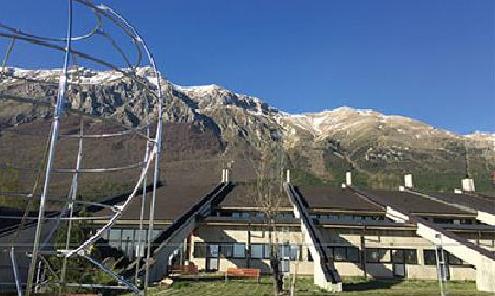Darwin experiment in CERN Courier
The DARWIN observatory proposed to be built at Gran Sasso in the mid-2020s promises to be the ultimate dark-matter detector, probing the WIMP paradigm to its limit (more).

One of the most exciting topics in physics today is the question about dark matter which might be made from Weakly Interacting Massive Particles (WIMPs). These could be detected directly by their collisions with nuclei in underground experiments and such a discovery would be a milestone in physics. However, since the expected signal rates are much lower than one interaction per kg of target material and year, large-mass detectors with ultra-low backgrounds are necessary ingredients of any experiment aiming for the discovery of WIMPs.
The DARWIN experiment was introduced in the March 2017 issue of the CERN courier. At our institute the group of Laura Baudis is participating in the experiment.